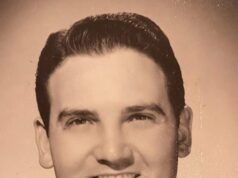BY KARLA ROBINSON
It’s not just for travelers anymore. Lexington residents have an embarrassment of riches when it comes to public radio stations: WUKY 91.3, WRVG 89.9, WRFL 88.1, WEKU 88.9. So, you’d think there would be a wide variety of formats-classical, jazz, bluegrass, college alternative, news/talk-the usual staples of public radio.
You’d be wrong.
It seems that the pursuit of the almighty dollar (in this case more donations and underwriters, rather than “advertisers”) has subverted the public interest responsibilities that used to guide decision-making in public radio.
When WRVG went on the air two years ago this month, it brought a welcome diversity to the airwaves, playing some bluegrass, “alternative,” and Americana music that rarely got a spin on other stations in the area. The format, referred to in the industry as Adult Album Alternative (AAA), was chosen by the Georgetown College station specifically to provide a different type of musical programming to the greater Lexington area.
Michael Dawahare, general manager of WRVG, explains: “We did a significant amount of market research. We looked at other metropolitan areas where there were two or more public radio stations, and what we found was that stations were duplicating programming-two stations would air National Public Radio’s All Things Considered and Morning Edition, for example. Then we found some stations that stood out, which had a AAA format. We decided that it would be in the best interest of the station and the market and the listeners to go with a AAA format.”

But in April of this year, WUKY decided to alter its music format from jazz and blues to programming very similar to WRVG’s. Though its website tag line is still “Jazz, Blues, and NPR News,” the station has added artists to its playlist that are much more in line with WRVG’s featured artists, like Steely Dan, Jill Sobule, and Keb Mo, and a few that are quite mainstream, like Sting, Paul Simon, and Counting Crows.
This change means that precious little of WUKY’s format is unique to this market. The programs from NPR, such as Morning Edition, Car Talk, All Things Considered, and Fresh Air, are all carried by WEKU 88.9 FM. And now, the music played during daytime hours mimics the AAA format used by WRVG.
The average listener probably couldn’t tell the difference between the musical formats of WUKY and WRVG without a little help. When asked to compare his station’s format to WUKY’s, Dawahare points out that “We produce the bulk of our programming ourselves, which allows us to go deep into the music, talking more about the music and artists. We give more information about the music we play. We’re more inclusive-we stretch across genres. They play it safe, we go broad.”
For its part, WUKY staff say that its format change was in response to audience requests. Stacy Yelton, program and music director for WUKY, says that before the format change, “We did intensive research, we looked at our ratings, and we listened to our supporters. We never would have made such a change without doing extensive research into what our listeners want to hear.”
Almost two months into the change, response has been mostly positive. Yelton notes, “We expected that we would have audience members who miss the smooth jazz, and we’ve certainly heard from them, but we also have had many phone calls and e-mails from listeners who are really loving the change.”
Yelton finds it interesting that people keep asking her to compare the two stations. In her view, “They do what they do, and we do what we do. The listeners are going to have to make up their own mind about the differences between the two stations. WRVG has a very different format from us. They are music intensive, and they do that very well. Our format change really only affected 9 am-3 pm, five days a week-the rest of the time you’re getting all the great NPR and PRI programs.”
In Lexington, as elsewhere, radio consolidation runs rampant, with three firms now owning the lion’s share of commercial stations in the market. Canned programming from around the country gets piped in to Lexington, and playlists are selected in corporate headquarters miles from here.
Public radio is supposed to be different. It’s supposed to enlighten and entertain, provide diverse programs and voices to the airwaves, and ensure that even small communities have a radio voice.
As things stand, the public stations in Lexington are making the airwaves less diverse, not more.







